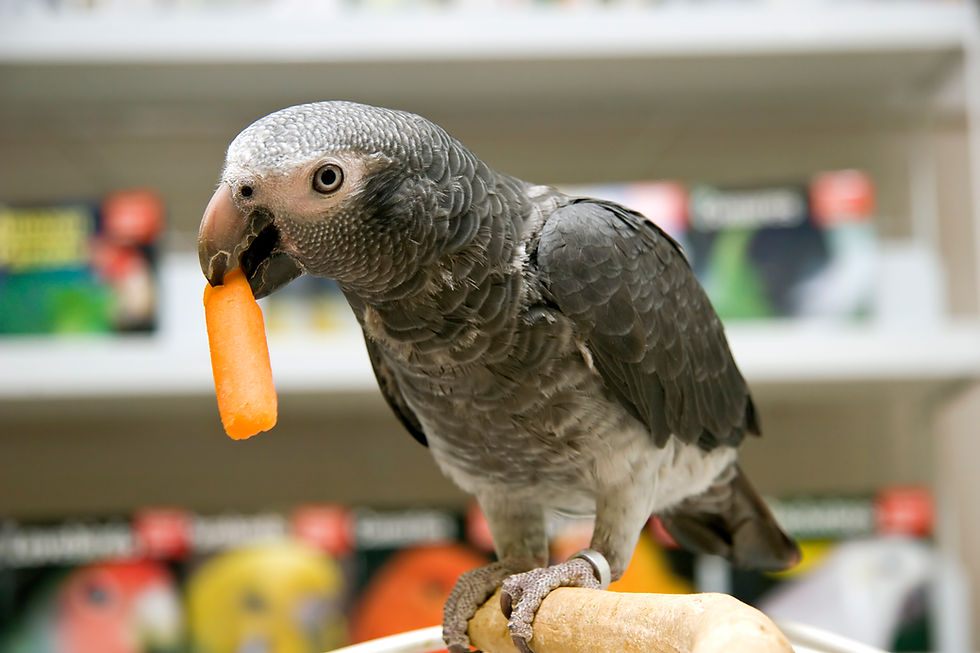Male or Female? How to Identify the Sex of Popular Exotic Pets
- LIBEVC

- Apr 1, 2023
- 4 min read
Updated: Jun 15, 2023
Rabbits, hedgehogs, ferrets, parrots and more

Ever wonder if your exotic pet is a male or a female? When it comes to many small mammals and birds, it can be tricky to tell. Perhaps you’ve adopted a new hedgehog, or your rabbit just gave birth to a litter of adorable bunnies. For the health of your pet and to prevent an accidental pregnancy, it can be crucial to know if you have a male or a female. (Or maybe you’re just curious...)
But how can you tell? It can be tricky, particularly if your small pet has even smaller genitalia. To help solve the mystery, we asked the professional exotic veterinary team here at LIBEVC how to tell the sex of popular pets.
Is Your Exotic Pet a Male or a Female?
Hedgehogs:
The hardest part about sexing a hedgehog is motivating them to uncurl. For both male and female hedgehogs, their anus sits near the base of the tail. In males, the penis is about 5 to 6 centimeters from the anus and may appear similar to a belly button. Hedgehogs can retract the penis into the penial sheath, which makes it harder to spot. Males do not have a scrotum because their testicles sit in the body, but if it’s mating season there may be some noticeable swelling in the region. In females, look for the vulva which is only about a centimeter away from the anus. Female hedgehogs have a smooth abdomen; no “belly button” should be present.
Learn more about how to care for your pet hedgehog.
Rabbits
To figure out the sex of your rabbit, apply gentle pressure on the genital orifice to expel the genital organs. From 10-12 weeks of age, when rabbits reach sexual maturity, the testicles descend and are visible. (Note that if your rabbit is neutered, there will be no visible testicles.) A male rabbit will have a round, protruding penis with a rounded urethral opening. In female rabbits, the vulva is elongated with a slit opening. Some females will develop a dewlap, a fold of loose skin hanging from the throat or neck, as a secondary sex characteristic.
Get more pro tips about rabbit care.
Guinea Pig
When identifying the sex of a guinea pig, a quick tip is that the male genitalia resembles a lowercase ‘i’ and female genitalia resembles a ‘Y’. Both male and female guinea pigs have a perineal sac around their anus and sex organs. Females guinea pigs, or sows, have a ‘Y’ shape at the opening of the vulva. If you were to apply pressure above the vulva, towards the belly, nothing will emerge. For male guineas, also referred to as boars, there is a short distance leading from the anus to the penis. It looks like a straight line leading to a dot. Apply gentle pressure above the genitals to cause the penis to extrude and for the testes to be more visible.
Learn more about how to care for your guinea pig.
Ferret
The majority of ferrets sold at a pet store will have already been spayed or neutered and de-scented by 4 weeks of age. An intact female ferret is referred to as a “Jill” and will have a smooth abdomen, as the vulva is adjacent to the anus. Intact males are known as “Hob” or “Jack.” The penis is located farther from the anus and is often mistaken for a belly button. Males do not have visible testicles if they have been neutered.
Check out our complete Ferret Care Guide to learn more.
Chinchilla
To determine the sex of your chinchilla, first take a look at the genitalia. Males have a discernible, hairless gap between the anus and penile cone. Apply pressure around the penile cone to gently pull out the penis from the sheath. When you do this, check for fur, hair or any string-like material wrapped around the penis. If you look carefully, you can see your chinchilla’s scrotum, testicles and penile cone. In female chinchillas, there are two genital orifices with a slit between the urethral cone and the anus.
For health reasons, it’s important to know the sex of your chinchilla. Captive males commonly get hair wrapped around the penis, known as “fur-rings.” This is extremely painful and can lead to urinary retention, loss of circulation and, in extreme cases, requires surgical intervention.
Get more pro tips on how to care for your chinchilla.
Sexing Parrots, Budgies and Other Birds
Here’s a trick that will work every time: If your pet bird lays eggs, it’s definitely a female. Otherwise - it can be hard to tell. So hard, in fact, that endoscopy was first used in avian medicine to determine the sex of monomorphic avian species in 1953.
Monomorphic birds are defined as species of which the male and female look similar. Only about 25% of parrot species are dimorphic, meaning the male and female look different. In Eclectus parrots, for example, the males are green and the females are red and blue. For the other 75% of parrots, and many other birds, you’ll need a DNA test to sex your pet. To do this, an avian vet will take a small blood sample through venipuncture.
While some people claim that you can tell if your pet bird is male or female based on behavior, this is not a reliable way to sex your pet.
Get more tips in our Parrot Care Guide and Budgie Care Guide.
Want to know your pet’s sex?
Call us to set up an appointment.



